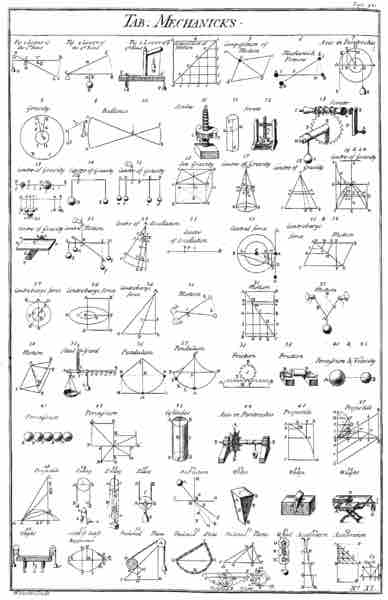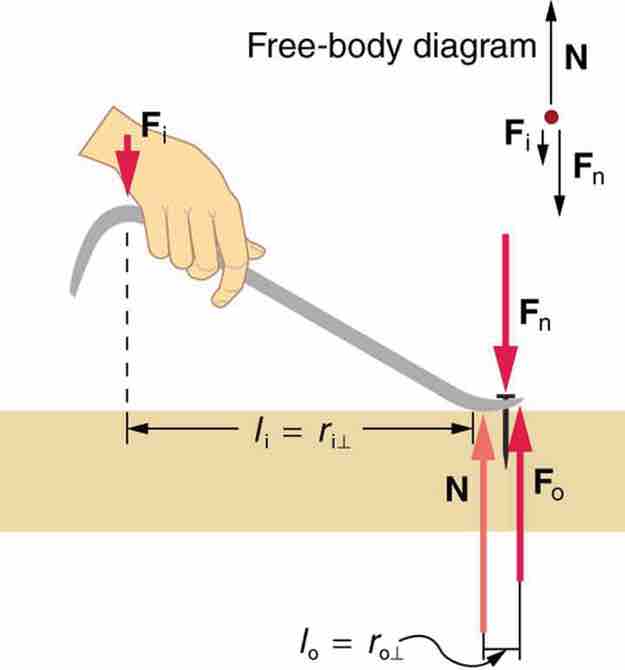Simple Machines
A simple machine is a device that changes the direction or magnitude of a force. They can be described as the simplest mechanisms that use mechanical advantage (or leverage) to multiply force. Usually, the term "simple machine" is referring to one of the six classical simple machines, defined by Renaissance scientists.
Simple machines are devices used to multiply or augment a force that we apply—often at the expense of a distance through which we apply the force. Some common examples include:
- Lever
- Wheel and Axle
- Pulley
- Inclined Plane
- Wedge
- Screw
When a device with a specific movement, called a mechanism, is joined with others to form a machine, these machines can be broken down into elementary movements. For example, a bicycle is a mechanism made up of wheels, levers, and pulleys.

Simple Machines
Table of simple mechanisms, from Chambers' Cyclopedia, 1728. [1] Simple machines provide a "vocabulary" for understanding more complex machines.
Mechanics
A simple machine has an applied force that works against a load force. If there are no frictional losses, the work done on the load is equal to the work done by the applied force. This allows an increase in the output force at the cost of a proportional decrease in distance moved by the load. The ratio of the output force to the input force is the mechanical advantage of the machine. If the machine does not absorb energy, its mechanical advantage can be calculated from the machine's geometry. For instance, the mechanical advantage of a lever is equal to the ratio of its lever arms.
Simple machines which do not experience frictional losses are called ideal machines. For these ideal machines, the power in (rate of energy input) in equal to the power out (rate of energy output):

Lever
The amount of force produced by a machine can not be greater than the amount of force put into it.
Further Examples
Wheelbarrows and shovels are also examples of simple machines (these utilize levers). They use only three forces: the input force, output force, and force on the pivot. In the case of wheelbarrows, the output force is between the pivot (wheel's axle) and the input force. In the shovel, the input force is between the pivot and the load.

Examples of Simple Machines
Both of these machines use the concept of levers.